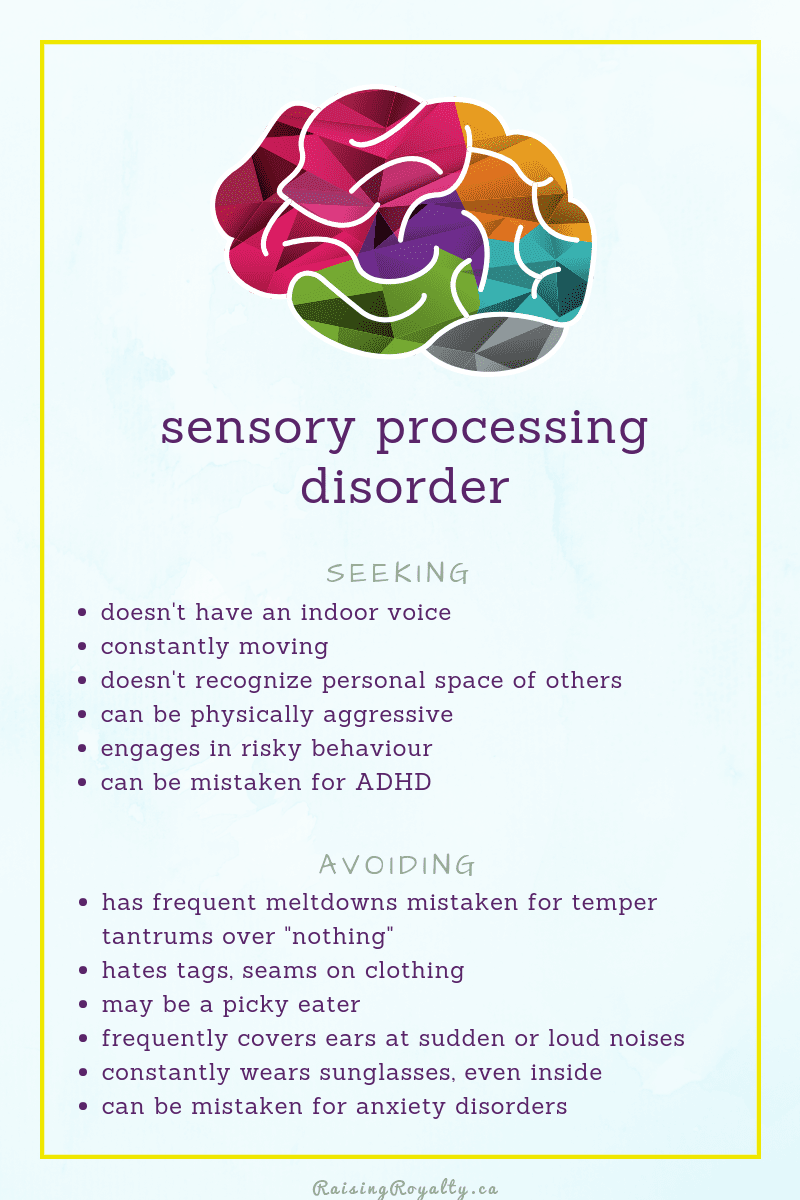

May crave fast spinning, hard hugs, or love being tossed in the air or jumping on furniture.



Here’s a sampling of some signs to look for:
#Sensory issues how to#
If you’re wondering how to tell if your toddler has a sensory processing issue, know that it can take many forms. What are the signs of sensory processing issues in children? Your doctor may also spot signs after developmental screenings at the 18-month or 2- or 3-year doctor well-child visits.Ī referral to a developmental and behavioral pediatrician, child psychiatrist, a child psychologist, neurologist or your state's early-intervention program may be recommended. The evaluations could, of course, reveal that your child’s ultra-sensitivity is simply typical toddler developmental behavior, but it’s better to be sure. While there’s no specific test your doctor can run to tell if your child has sensory processing issues, talk to your pediatrician about any concerns you have. Instead, when sensory symptoms are present, other developmental disorders - specifically, autism spectrum disorders, attention deficit/hyperactivity disorder (ADHD), developmental coordination disorder and anxiety disorder - should be considered and evaluated.
#Sensory issues manual#
However, sensory processing disorder isn’t included in the Diagnostic and Statistical Manual of Mental Disorders (DSM-5) that’s used by physicians and psychologists to officially diagnose developmental conditions, and the American Academy of Pediatrics (AAP) advises that doctors not use sensory processing disorder as a diagnosis. These kids are unusually indifferent to sensations and some might seem to be starved for stimulation, constantly needing to touch, sniff and taste - well outside the realm of appropriate or typical exploration.Ī child with sensory processing issues is sometimes referred to as having sensory processing disorder (SPD). On the opposite end of the spectrum are children who have an under-sensitivity, or the hyposensitive tyoe of sensory issues. These scenarios are considered an over-sensitivity, or the hypersensitive type of sensory issues. Examples of sensory issues include not being able to stand certain textures against one’s skin, getting upset when a siren screams by or avoiding hugs. Sensory processing refers to the way in which a child responds to what he feels, tastes, smells, sees or hears.


 0 kommentar(er)
0 kommentar(er)
